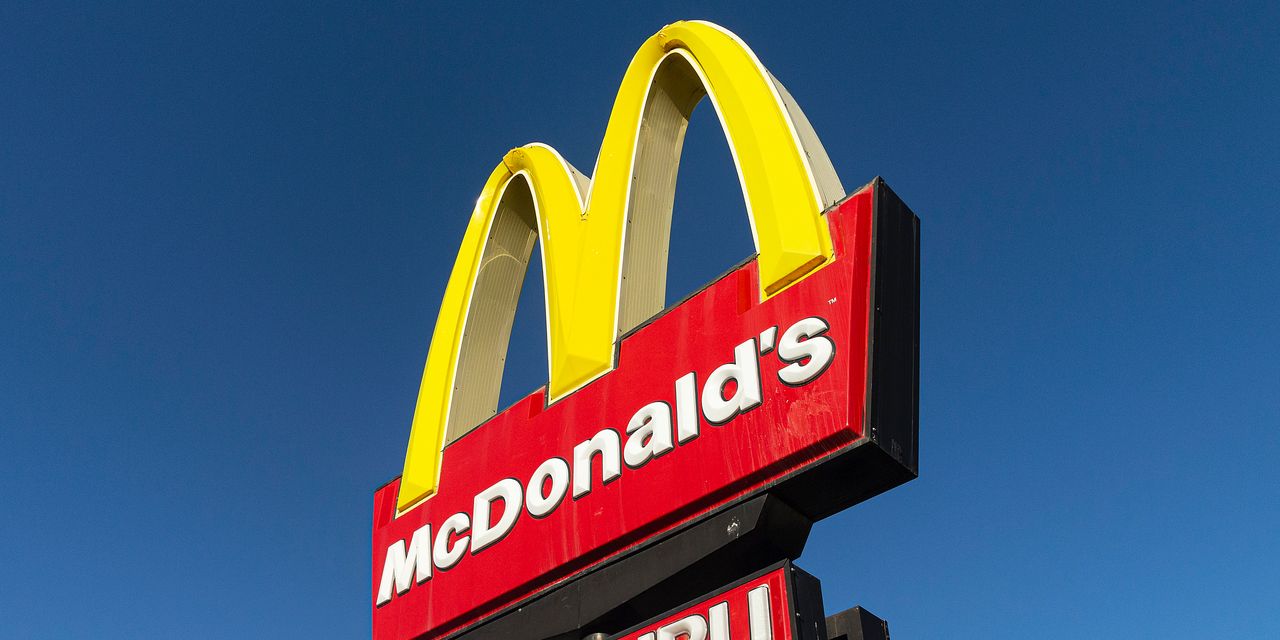McDonald’s said in January it would review corporate staffing levels.
Daniel Pockett/Getty Images
Reports that
McDonald’s
is expected to lay off corporate employees this week spurred fears the labor market could be softening in the restaurant industry, but analysts say they don’t see reason for alarm.
Fast-food chain McDonald’s (ticker: MCD) is temporarily closing its U.S. offices, telling corporate employees in an internal email to work from home from Monday through Wednesday so it can communicate layoff decisions remotely, The Wall Street Journal reported. The memo also asked workers to cancel in-person meetings at its headquarters.
“During the week of April 3, we will communicate key decisions related to roles and staffing levels across the organization,” the company said in the message to staff, which was seen by the Journal.
McDonald’s declined to comment when contacted by Barron’s. The stock closed 0.9% higher at $282.14, and has gained 7% this year.
Some analysts argue that the layoffs are specific to the company and don’t signal an industrywide trend. McDonald’s had announced the layoffs since January, saying they were part of its reorganization plan. The plan doubles down on what the company calls the 4Ds—delivery, digital, drive-through, and development.
“It’s been pretty well telegraphed and messaged to Street investors that it is about redeploying employees and not about shrinking,” said Guggenheim analyst Gregory Francfort in a call with Barron’s.
Northcoast Research analyst Jim Sanderson agrees, adding the corporate job cuts don’t stem from a need to cut costs in the short term, given that McDonald’s management team has been pretty reasonable at controlling costs and expenses.
He hopes that with the completion of the layoffs, the company will provide more context on the status of its reorganization plan, including information on its digital strategy. Some digital initiatives the company may be considering exploring include automated drive-through ordering and carving out its online ordering system, he said in a call.
“I’m very excited about the digital component of the restaurant business and its potential,” Sanderson said. The company’s digital strategy has the potential of both driving sales as well as improving labor productivity, he added.
Because the layoffs are expected to affect corporate employees as opposed to those working in its restaurants, it adds to concerns over a so-called “white-collar recession.”
General Motors
(GM) said last month it is cutting salaried and executive staff positions, after previously saying it wasn’t planning layoffs. In February,
FedEx
(FDX) announced plans to cut 10% of its executive team as it looks to streamline its operations.
Boeing
(BA) is also looking to cut around 2,000 jobs in its finance and human resources departments. Separately, UBS (UBS) is preparing to lay off between 20% and 30% of its workforce following its planned takeover of Swiss bank rival Credit Suisse (CS), local newspaper SonntagsZeitung reported Sunday.
Workers on the services side of the retail sector have been somewhat protected from the growing trend of job cuts in recent months as retailers and restaurants have faced labor shortages coming out of the pandemic.
More than 60% of restaurant operators say they can’t support customer demand with the number of staff they current have, and nearly 80% say they have service-level jobs they can’t fill, according to the National Restaurant Association.
The labor squeeze has prompted restaurants and other retailers to raise hourly wages and offer other benefits in a bid to attract talent and staff stores. And while that may help in recruiting workers, it has also taken a bite out of margins—something McDonald’s hasn’t been immune from.
Investors will be looking for further signs of the U.S. labor market cooling when the U.S. jobs report for March is released Friday. The economy added another 311,000 jobs in February, sharply lower than January’s revised 504,000 but above expectations of a 215,000 increase.
Write to Callum Keown at [email protected] and Sabrina Escobar at [email protected]
Read the full article here










